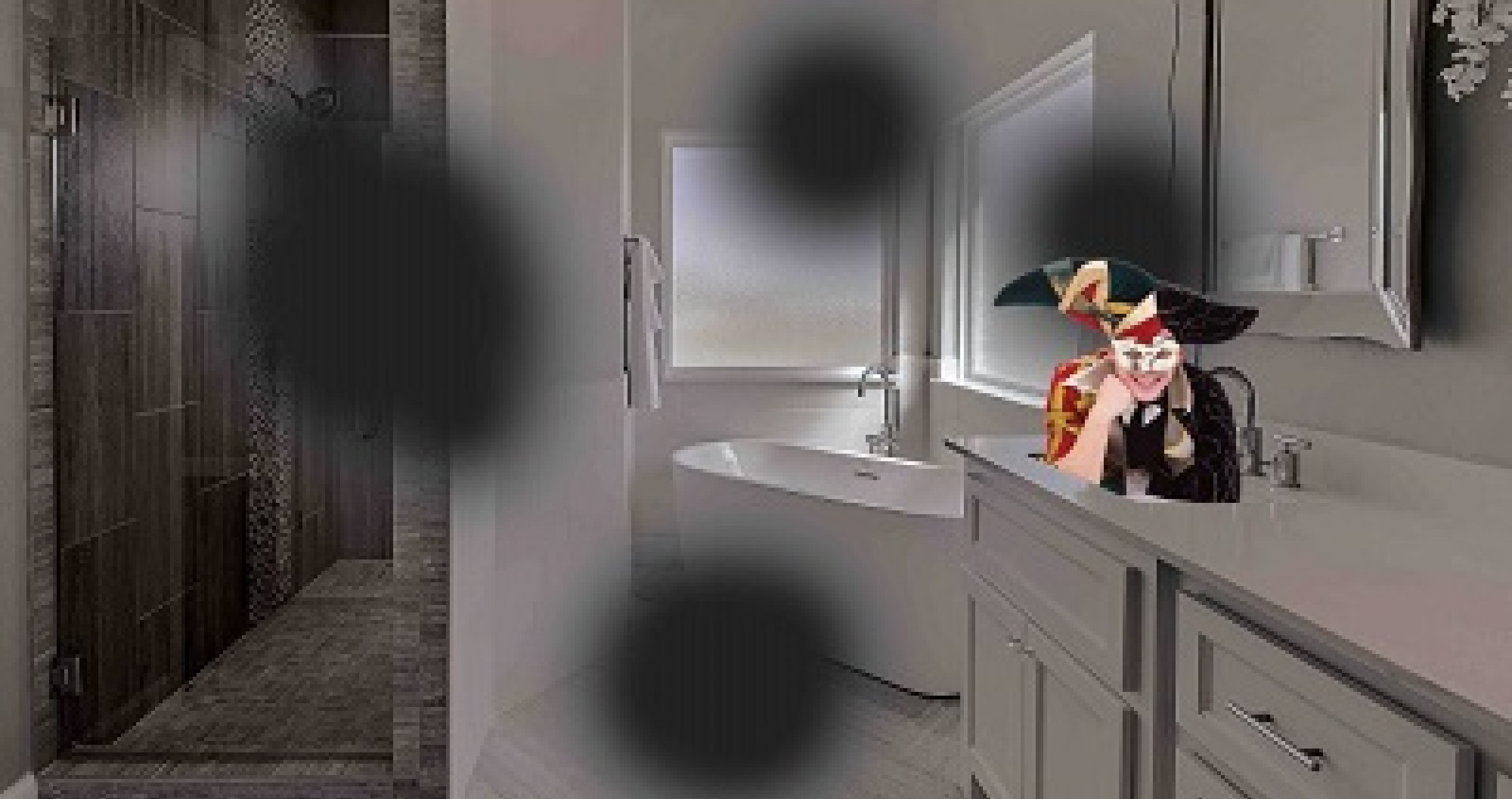Share
Imagine the following scenario: You are 66 years of age, vision-impaired and at home. You enter the bathroom and are astonished to discover a bizarre character wearing an exotic headdress is sitting in the sink. At first you are startled, and perhaps frightened.

The figure in the wash basin appears to be just as real as the shower recess and towels.
Your everyday impoverished vision is typically lacking in clarity and colour, but surprisingly this figure is vivid and detailed. You blink your eyes several times, but the unnerving vision persists. You are seized by an unwavering thought: “What on earth is happening to me?”
Upon leaving the bathroom the disturbing vision eventually disappears. Relief, and nothing more for the rest of the day. However, over the coming days, this unwanted visitor suddenly reappears in the kitchen, and later while watching TV.
This situation stretches out to weeks. The mind has been racing and a prominent thought – “First I lost my vision, am I now losing my mind?” – just will not let up.
What is worse is that you keep all this very much to yourself. You are too frightened to tell anyone – certainly not the optometrist or GP – lest you be ridiculed or, even worse, referred to a psychiatric service.
Welcome to the peculiar world of Charles Bonnet Syndrome (CBS). Though it was first clinically identified in 1760, CBS unfortunately remains at the periphery of eye healthcare awareness.
To the surprise of many it is not at all a rare condition. It is currently estimated that approximately 40% of all those who acquire vision loss will develop CBS. That translates to an utterly staggering number of people affected.
What is CBS? It is the experience of recurrent phantom images in a vision-impaired person who is otherwise of sound mind. The syndrome is not associated with mental illness or dementia. Rather, it is a quirky side effect of vision loss comparable to the phenomenon of phantom limbs.
The vast majority of people affected by CBS are over the age of 55, however the condition can, and does, strike at any age, even among children. It often occurs following a sudden drop in one’s vision. Currently there is no effective treatment, let alone a cure.
Any form of eye disease can result in CBS. This includes macular degeneration, cataracts, glaucoma and diabetic retinopathy. The range of images encountered is vast: from coloured blobs and geometric patterns, right through to buildings, flowers, figures in old-fashioned attire and even full landscapes. CBS images usually appear for seconds to a few minutes but can sometimes extend for much longer periods.
The images are always silent and the person usually comes to realise quite early on that the images are not, or simply cannot, be real. The person is not deceived by what they ‘see’.
Even so, having to contend with intrusive and often unwanted Bonnet images tends to negatively affect a person’s quality of life. It can lead to isolation and loneliness. Additionally, this is on top of the disruptions to life that typically occur due to sight loss, such as reduced driving, reading ability, and self-confidence.
A 2018 study found that 55% of Canadian GPs had never heard of CBS and a further 20% had only scant knowledge. Presumably, comparable results also exist within an Australian context. Additionally, those working in low vision settings are typically not screening for, or forewarning of, CBS. Hence it is being clinically missed and, in turn, under-appreciated in terms of its sizeable impact upon patient care.
It is envisaged that one day it will become mandatory for healthcare practitioners to screen for CBS among their vision-impaired patients. Steps towards this have already begun. RANZCO has already developed an excellent CBS position statement, the Royal College of GPs (UK) has identified CBS as a clinical priority, and in June this year the World Health Organization recognised CBS in its International Classification of Diseases.
Ophthalmic practitioners are encouraged to learn more about this peculiar perceptual disorder and consider broaching the topic with patients. It has been found that in about 70% of cases, once the practitioner explains the syndrome to the patient and allays fears of impending insanity, enormous relief follows.
This reassurance is often the single most important treatment of all.


